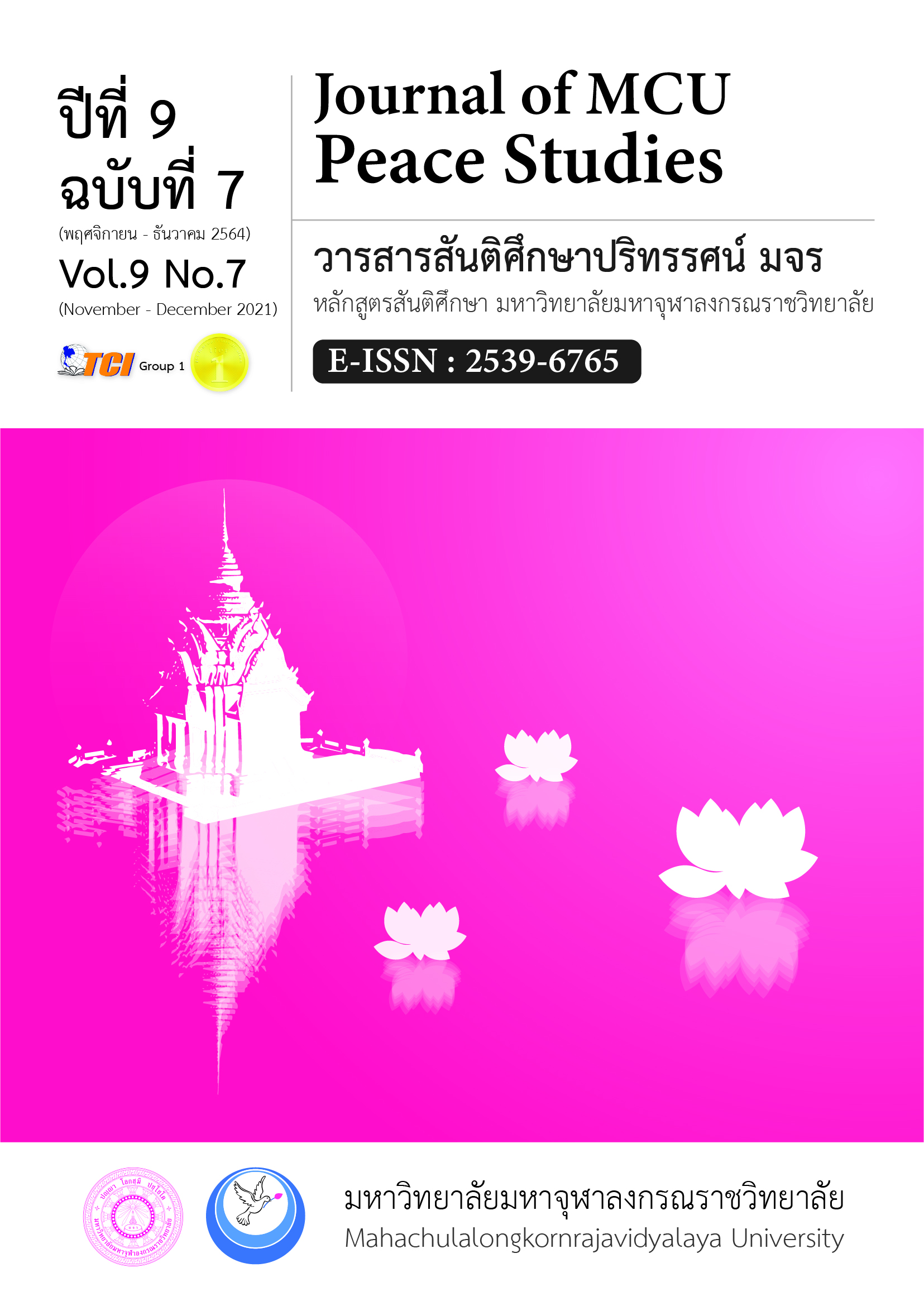บุพปัจจัยของความสำเร็จของผู้ประกอบการเครื่องสำอางสมุนไพร เพื่อการส่งออกในประชาคมอาเซียน
Main Article Content
บทคัดย่อ
บทความวิจัยนี้มีวัตถุประสงค์เพื่อศึกษา 1) ระดับของความสำเร็จของผู้ประกอบการเครื่องสำอางสมุนไพรเพื่อการส่งออก รูปแบบการบริหาร สภาพแวดล้อมภายนอก ทรัพยากรเพื่อการส่งออก และความได้เปรียบในการแข่งขัน และ 2) ปัจจัยที่มีผลต่อความสำเร็จของผู้ประกอบการเครื่องสำอางสมุนไพรเพื่อการส่งออก การวิจัยนี้ใช้วิธีการวิจัยเชิงปริมาณ มีกลุ่มตัวอย่างคือ ผู้ประกอบการเครื่องสำอางสมุนไพรเพื่อการส่งออก รวมจำนวน 340 คน ขนาดของกลุ่มตัวอย่างกำหนดโดยใช้เกณฑ์ 20 เท่าของตัวแปรสังเกต ใช้วิธีการสุ่มตัวอย่างแบบหลายขั้นตอน เก็บข้อมูลด้วยแบบสอบถาม และวิเคราะห์ด้วยสถิติพรรณา และแบบจำลองสมการโครงสร้าง ผลการวิจัยพบว่า 1) ความสำเร็จของผู้ประกอบการเครื่องสำอางสมุนไพรเพื่อการส่งออก รูปแบบการบริหาร สภาพแวดล้อมภายนอก ทรัพยากรเพื่อการส่งออก และความได้เปรียบในการแข่งขัน อยู่ในระดับมาก 2) ทรัพยากรเพื่อการส่งออก มีอิทธิพลโดยรวมต่อความสำเร็จของผู้ประกอบการเครื่องสำอางสมุนไพรเพื่อการส่งออก มากที่สุด รองลงมาคือ สภาพแวดล้อมภายนอก รูปแบบการบริหาร และ ความได้เปรียบในการแข่งขัน ตามลำดับ ผลของการวิจัยนี้ ผู้ประกอบการเครื่องสำอางสมุนไพรเพื่อการส่งออก ผู้ผลิตและจัดจำหน่ายเครื่องสำอางสมุนไพรในประเทศ รวมถึงหน่วยงานทั้งภาครัฐ สามารถนำข้อค้นพบไปใช้ในการวางแผนการดำเนินงาน กำหนดนโยบาย และกลยุทธ์ต่าง ๆ เพื่อผลักดันให้ผู้ประกอบการเครื่องสำอางสมุนไพร ประสบความสำเร็จในการดำเนินงานเพื่อการส่งออกอย่างยั่งยืนต่อไป
Article Details

อนุญาตภายใต้เงื่อนไข Creative Commons Attribution-NonCommercial-NoDerivatives 4.0 International License.
ทัศนะและความคิดเห็นที่ปรากฏในบทความในวารสาร ถือเป็นความรับผิดชอบของผู้เขียนบทความนั้น และไม่ถือเป็นทัศนะและความรับผิดชอบของกองบรรณาธิการ ยินยอมว่าบทความเป็นลิขสิทธิ์ของวารสาร
เอกสารอ้างอิง
Acquaah, M. (2011). Business strategy and competitive advantage in family businesses in Ghana: The role of social networking relationships. Journal of Developmental Entrepreneurship, 16(1), 103-126.
Agha, S. , Alrubaiee, L. , & Jamhour, M. (2011). Effect of core competence on competitive advantage and organizational performance. International Journal of Business and Management, 7(1), 192–205.
Akio, T. (2005). The critical assessment of the resource- based view of strategic management. Ritsumeikan International Affairs, 3, 125-150.
Amit, R., & Schoemaker, P. J. (1993). Strategic assets and organizational rent. Strategic Management Journal, 14(1), 33-46.
Bangkok Biz News. (2019). Thai beauty market bustles at the beginning of the year. Retrieved July 30, 2019, from https://www.bangkokbiznews.com/biz2u/260348
Castello, H. (2018). Global Cosmetics Products Market expected to reach USD 805.61 billion by 2023 – Industry Size & Share Analysis. Retrieved November 11, 2019, from https://www.reuters.com/brandfeatures/venture-capital/article?id=30351
Chahal, H. , & Bakshi, P. (2014). Effect of intellectual capital on competitive advantage and business performance: Role of innovation and learning culture. International Journal of Learning and Intellectual Capital, 11(1), 52–70.
Chandler, A. D. (1962). Strategy and structure: Chapters in the history of American industrial enterprises. Cambridge. MA.: MIT Press.
Cream Buildings. (2019). Thai beauty business Seize the export market opportunity. Retrieved September 28, 2019, from http://creambuildings.com/ธุรกิจความงามไทย-คว้าโอ/
Dess, G. G. , & Lumpkin, G. T. (2005). The role of entrepreneurial orientation in stimulating effective corporate entrepreneurship. Academyof Management Executive, 5(4)147-156.
Dimaggio, P., & Powell, W. (1991). The iron cage revisited: Institutional isomorphism and ollection rationality in organizational fields. American Sociological Review, 48, 147-160.
Dreyer, B., & Gronhaug, K. (2004). Uncertainty, flexibility, and sustained competitive advantage. Journal of Business Research, 57, 484–494.
Food and Drug Administration. (2013). ASEAN Guidelines for Cosmetic good Manufacturing Practice. Retrieved July 30, 2019, from https://www.fda.moph.go.th/sites/Cosmetic/Download/คูKมือการตรวจประเมินสถานที่ผลิต%20ตามแนวทางวิธีที่ดีในการผลิตเครื่องสำอาง
อาเซียน%20(สิงหาคม%202556).pdf
Ismail, D. (2014). A corporate governance study on Italian family firms. Corporate Ownership & Control, 5(4), 93-103.
Hitt, M. A. , Ireland, R. D. , & Hoskisson, R. E. ( 2012). Strategic management cases: Competitiveness and globalization. Canada: Nelson Education, Ltd.
Kaleka, A. (2002). Resources and capabilities driving competitive advantage in export markets: guidelines for industrial exporters. Industrial Marketing Management, 31(3), 273-283.
Kaleka, A. (2012). Studying resource and capability effects on export venture performance. Journal of World Business, 47(1), 93-105.
Kinuu, D. ( 2014). Top management team psychological characteristics, institutional environment, team processes and performance of companies listed in Nairobi securities exchange. (Doctoral Dissertation). University of Nairobi. Kenya.
Kline, R. B. (2005). Principle and practice of structural equation modeling. NY: Guildford.
Lee, J. S., & Hsieh, C. J. (2010). A Research in relating entrepreneurship, marketing capability, innovative capability and sustained competitive advantage. Journal of Business & Economics Research (JBER), 8(9), 109-120.
Lu, Y., Zhou, L., Bruton, G., & Li, W. (2010). Capabilities as a mediator linking resources and the international performance of entrepreneurial firms in an emerging economy. Journal of International Business Studies, 41(3), 419-436.
Ma, H. (1999). Creation and preemption for competitive advantage. Management Decision, 37(3), 259-267.
Monteiro, A. P. , Soares, A. M. , & Rua, O. L. (2017). Entrepreneurial orientation and export performance: The mediating effect of organizational resources and dynamic capabilities. Journal for International Business and Entrepreneurship Development, 10(1), 3-20.
Murgor, P. K. (2014). External environment, firm capabilities, strategic responses and performance of large scale manufacturing firms in Kenya. (Doctoral Dissertation). University of Nairobi. Kenya.
Njoroge, J. K. , Ongeti, W. J. , Kinuu, D. , & Kasomi, F. M. (2016) . Does external environment influence organizational performance? The case of Kenyan state corporations. Management and Organizational Studies, 3(3), 41-51.
Office of Small and Medium Enterprise Promotion. (OSMEP). (2018). Open a treasure for Thai beauty business. Seize opportunities for the export market. Retrieved July 30, 2019, from https://www.smeone.info/event-detail/4726
Office of the Permanent Secretary Ministry of Commerce. (2018). Cosmetics, soaps and skin care products: list of Thai exporters-importers. Retrieved October 21, 2019, from http://www2.ops3.moc.go.th/ie/Default.aspx
Pinho, J. C., & Prange, C. (2016). The effect of social networks and dynamic internationalization capabilities on international performance. Journal of World Business, 51(3), 391-403.
Porter, M. E. (1997). Competitive strategy. Measuring Business Excellence, 1(2), 12-17.
Prieto, I. M. , Revilla, E. , & Rodríguez-Prado, B. (2009). Building dynamic capabilities in product development: How do contextual antecedents matter?.Scandinavian Journal of Management, 25(3), 313-326.
Rochdi, D. , Khatijah, O. , & Muhammad, A. S. A. H. (2017). Mediating role of the innovation effectiveness on the relationship between entrepreneurial. Polish Journal of Management Studies, 15(1), 185–196.
Schermelleh-Engel, K., Moosbrugger, H., & Müller, H. (2003). Evaluating the fit of structural equation models: Tests of significance and descriptive goodness-of-fit measures. Methods of Psychological Research Online, 8(2), 23-74.
Scott, W. R. (2008). Institutions and organizations ideas and interests. Los Angeles: Sage.
Shane, S., & Venkataraman, S. (2000). The promise of entrepreneurship as a field of research. Academy of Management Review, 25(1), 217-226.
Tiprean, J. (2016). Studying the Purchase of Souvenirs in Bangkok by Free in Dependent from China. (Master’s Thesis). Thammasat University. Pathum Thani.
Wannapurk, Th., & Punpanich, N. (2021). Export Strategy and Success of Thai Cosmetic Business in Laos People’s Democratic Republic. Journal of MCU Peace Studies, 9(1), 27-43.


